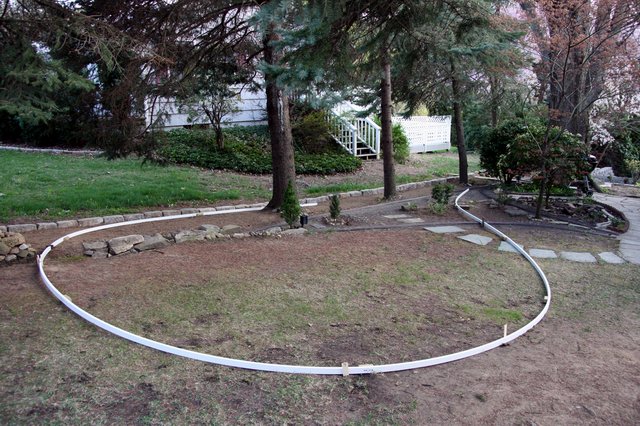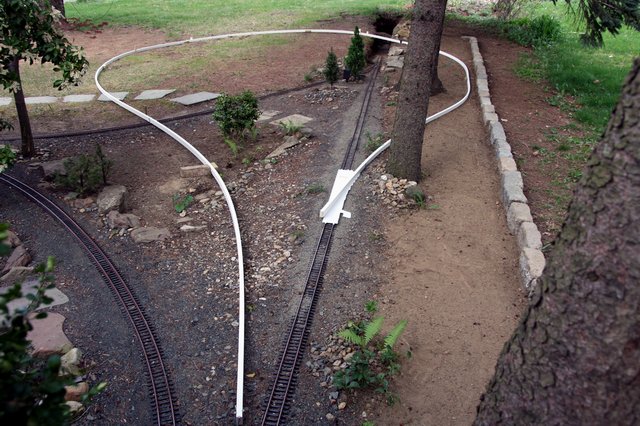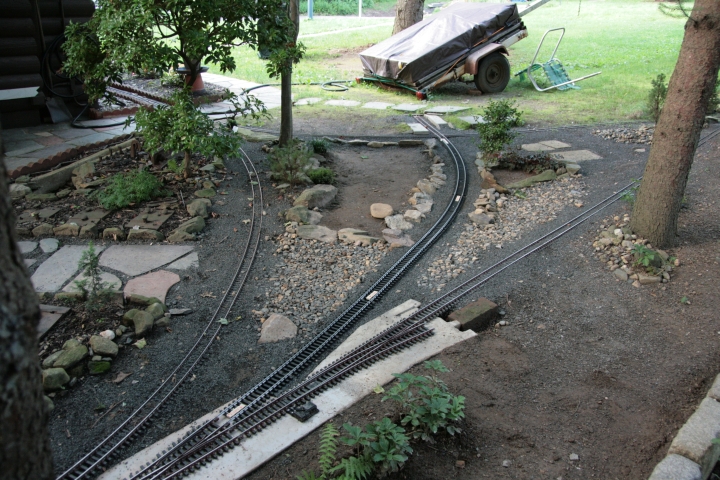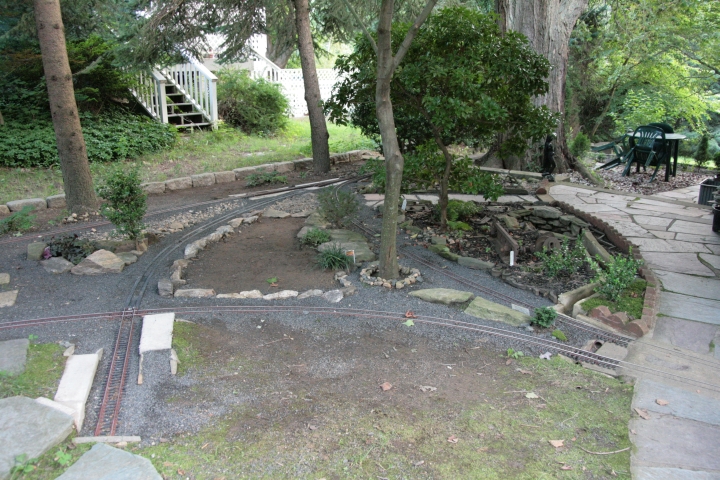Most of you know I’ve been planning adding a loop for a long time. Initial “hose trials” took place in the fall of 2006 (I think)…
Step one was to build a border to protect the track from my neighbors mower This was completed in the spring of 2008…
Ladder roadbed trials followed that same spring…


Step 2 - Actual work on the expansion began in Summer 2009 with the installation of a switch pad at Indian Hill Junction and a diamond crossing pad between Deep Cut and Walk…


Last summer the project got sidetracked while Deep Cut was rehabilitated with a tunnel and rock cut. Not forgotten, part of the Deep Cut tunnel project was to install the bridge abutments for where the loop will fly over the main…
Today, I began laying ladder road bed from the unused switch up the hill toward the bridge. As part of the process I decided to measure the rise so I can set the roadbed to the proper grade. Just before dusk I set up my laser level at the bridge abutment and shot back to the switch. I was shocked at the amount of rise in that short distance: 27.5 inches!!! The run from switch to bridge is exactly 30 feet or 360 inches. 27.5" / 360 = .0764 That’s over a 7.5% Grade :o I think I have no choice other than to lower the abutments. I could probably come down 3 or 4 inches. It’s still going to be over 6% and will require use of a through truss rather than a girder bridge to keep overhead clearance on the main. I’ll verify the measurements before beginning demolition, but I’m pretty sure I have it right.


 Even Andy who does have tons of space has a difficult time in places. All part of the fun
Even Andy who does have tons of space has a difficult time in places. All part of the fun